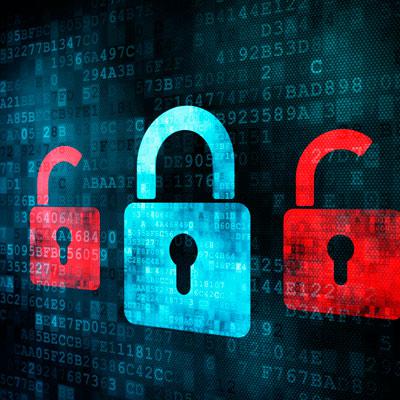6 Ways Blockchain Can Be Used To Make Cloud Customers More Secure

Trust Takes Center Stage
Blockchain was originally conceived as the distributed ledger technology that powers Bitcoin. But its applications go far between cryptocurrency, with the potential to bring more transparency to business thanks to its tamper-proof qualities and ability to provide a single source of truth for multiple parties.
Six cloud security CEOs, sales leaders and technical experts told CRN that businesses can use blockchain to record whether or not a user or device should be trusted, which takes on additional importance when dealing with items such as workload processing and firmware updates where the manipulation of information could cause great harm.
From ensuring that data is fresh at all times and simplifying the management of consent to cutting out third party intermediaries and reducing the likelihood of fraud, here's how blockchain could be a security boon for businesses.

Maintain The Root Of Trust
Establishing trust in the cloud can be difficult since users aren't on the company's network, using familiar devices, or in their control, according to Michael Fey, president and COO of Mountain View, Calif.-based Symantec. It therefore becomes difficult for companies to get trust around the data that's being produced and accessed in the cloud, Fey said.
Blockchain, though, provides a history alongside that information that's being generated in the cloud, which Fey said can help with both defining authenticity and delivering encryption.
Blockchain would be most helpful in instances where manipulating information could cause great harm, such as when organizations are dealing with workload processing, firmware updates, software updates and audit information. Blockchain is better at establishing a root of trust that legacy technologies such as certs since the later is more focused on network communication rather than validating the data.
Accurately Record If A User Should Be Trusted
In a zero-trust model, organizations are looking to pair trusted users, trusted devices, and the applications they can access, according to Brian Roddy, vice president of cloud security for San Jose, Calif.-based Cisco Systems.
Blockchain could be an interesting way to augment the ability to trust users and devices, Roddy said. Specifically, Roddy said the use of a ledger system to record with guaranteed authenticity which users are and are not trusted helps create chains of trust between users and the devices themselves.
A trust ledger can be used to help stop people from impersonating other folks, Roddy said. Although blockchain currently can be a little complicated to deploy and manage, Roddy said it offers tremendous promise around establishing the trustworthiness of users and deices.

Manage Access In Dynamic, Decentralized Manner
Identity and access management has, for the longest time, relied on static mechanisms to authenticate, verify, and prove that customers are who they say they are, according to Rohit Gupta, group vice president, cloud security for Redwood Shores, Calif.-based Oracle. Blockchain, though, presents a revolutionary approach to 'know your customer' regulations as compared with more static tactics.
Unlike with static approaches, Gupta said blockchain data is fresh all the time, automatically keeping up, for instance, with any changes made to insurance or health data. In addition, Gupta said blockchain's decentralized framework automatically puts ownership in the hands of the consumer for items that proactively require consent as opposed to needing to build this capability as a bolt-on.
At the end of the day, Gupta said most service providers will operate in a model where they don't want to retain ownership of data attributes. Unlike legacy architectures, Gupta said blockchain is more scalable and builds in privacy by design.

Detect Customers Mining Bitcoin
Blockchain does a good job of detecting if customers are using horsepower from public clouds such as AWS and Azure to mine bitcoin, according to Sanjay Beri, CEO of Los Altos, Calif.-based Netskope. A lot of businesses are stuck with data centers that aren't being used at night as well as public cloud environments being used for mining, Beri said.
Businesses need to be using the right algorithms to detect cryptocurrency mining activity, according to Beri. Specifically, Beri said companies must be able to actually see the traffic coming rather than sitting offline looking at an app to combat this issue.
The incidence of cryptocurrency mining has increased, Beri said. But businesses don't want to have their arms twisted into adopting new security tools or platforms that prevent malicious use of the public cloud. Instead, Beri said organizations are looking for vendors that view the thwarting of bitcoin mining as a feature within their overall product set.
Cut Out Third Party Intermediaries
Blockchain is primarily about cutting out third-party intermediaries and creating new types of business offerings that could not have existed previously, according to Daniel Spurling, director, cloud and transformation at Seattle-based Slalom Consulting, No. 37 on the 2018 CRN Solution Provider 500.
This is especially true in the financial services segment, Spurling said, since it historically required having a trusted third human being. But since that third party can now just be technology rather than a human, Spurling said new types of business services can be created.
This should help with starting to unlock the potential of blockchain, which Spurling believes will be massive. All told, Spurling said blockchain is primarily a next-generation approach to securing how organizations share data rather than a cloud-based approach to storing, operating, and presenting applications.

Reduce Likelihood Of Fraud
The distributed ledger that makes up the backbone of blockchain can't be cracked or tapped into, providing organizations with a high level of assurance, according to Shawn Keve, executive vice president, sales and marketing at Atlanta-based Simeio Solutions, No. 369 on the 2018 CRN Solution Provider 500.
Conversely, one person typically controls everything in a traditional environment, which Keve said results in a higher risk for fraud or tampering. Given the involvement of third parties and usage of a distributed ledger, Keve said blockchain is going to require a different level of governance.
As blockchain evolves, Keve said organizations will need to conduct awareness education around both the implications of using blockchain as well as the presence or absence of control for a business. Although Keve believes blockchain will have a massive impact, he said it's not all that well-understood today, particularly as it relates to the privacy implications of its boundary-less storage system in place.